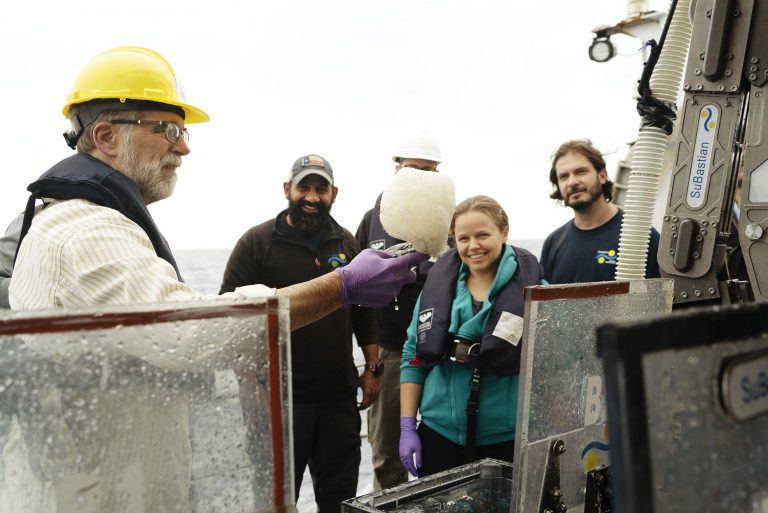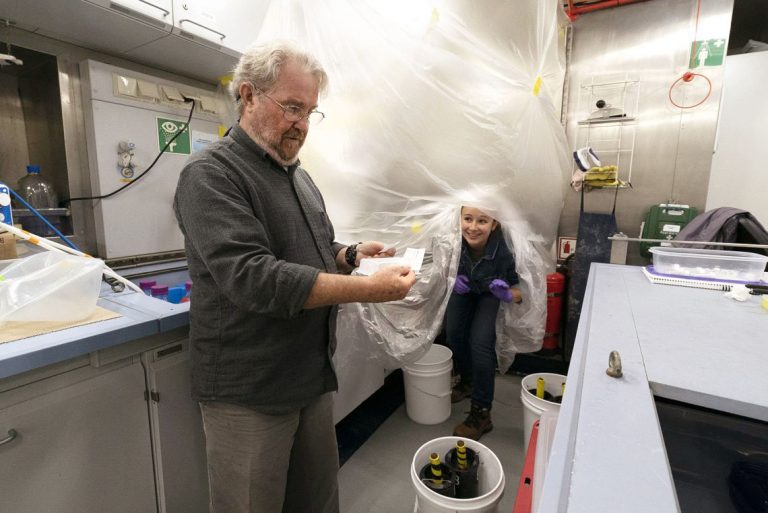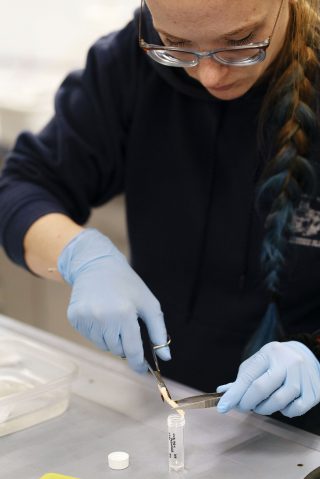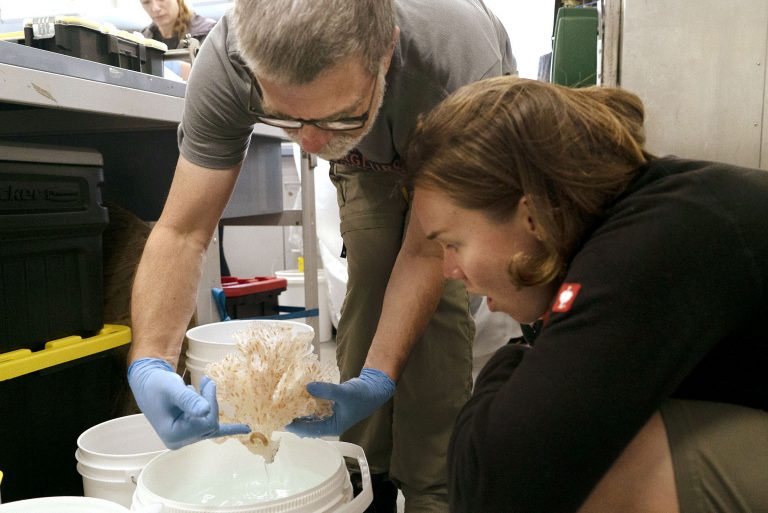As Remotely Operated Vehicle SuBastian begins its ascent back to R/V Falkor’s aft deck, scientists leave the Control Room and stretch their legs for the first time in several hours. This expedition to the Emperor Seamounts has proven an emotional test for the researchers, who had to deal with anticipation building up during the long transit from Hawaii to this remote area of the North Pacific, only to find themselves (often at the last minute) learning if a dive would be possible due to the rough weather. Fortunately, nearly every day the response from the Bridge was positive, and SuBastian has accumulated nine dives in areas that have never been explored before.
The resident scientists wake up early, excited about the prospect of a new dive, spend the day glued to the screens around the ship – on the edge of their seats scrutinizing the seafloor – and have only a brief break before they rush to collect the samples that have come from the deep sea, and await in the Wet Lab.

“It’s crazy,” says Dr. Scott France. “It took years to prepare this expedition, we sailed for many days to get here, and now we only have three or four dives left.”
Multiple science meetings took place inside Falkor’s library prior to departure and during the long transit. The effort pays off as the scientists follow a careful and genuinely cheerful choreography that has played in their heads many times in preparation. Although choreography refers to the design of a sequence of steps and movements in dance, what the resident scientists accomplish after every one of ROV SuBastian’s dives is nothing short of an art. After years of experience and collaboration, they have devised a synchronized operation that ensures the samples coming up from the depths of the ocean are processed and stored as quickly as possible. This is a crucial step in all the work that will follow once Falkor comes back ashore. These samples will keep the experts busy for years, processing them in different laboratories.
Coming Up!
After stretching their legs and getting some quick dinner, the scientists start preparing Falkor‘s wet lab. Filling enough buckets with cold seawater is crucial to maintain some degree of constancy between the conditions of the deep sea and those onboard the vessel. For the same reason, trays full of ice await inside the wet lab as well. Once ROV SuBastian is secured on Falkor‘s aft deck and the ROV team has run all of the post-dive checks, it is time to retrieve the samples. This is where the choreographic training kicks in.
Dr. Scott France, self-proclaimed “traffic cop,” holds several freshly printed paper tags, that will be promptly placed next to each sample in a marriage that will not break-up from that moment onwards. The rest of the experts flow around the ROV efficiently, transporting the samples to the Wet Lab right after Scott has paired each one with its respective tag. The idea is not to mix the samples, ensuring that it is always possible to trace where all of them came from. Time is of the essence, but there is always a few seconds available to show the most impressive specimens to the ROV pilots and crew that gather around to take a peek.

Go, Go, Go
Some species degrade more quickly, so those are the first to be processed. As the deep sea is still largely unknown, every time an ROV dives down it is very possible to find new species, keeping a sharp photographic record is essential. This both serves as documentation for the many papers that will undoubtedly follow this expedition, and also will become reference material that other experts will consult in the future, when they encounter these species and need to make identifications. This is why the first step is to photograph each specimen in Dr. Watling’s makeshift photo studio, but not if the sample contains anything that catches the eye of Becca Lensing. Becca collects samples of microbial organisms growing in the corals, and her delicate task takes precedence.

Immediately after pictures have been taken, Dr. Watling hands the sample over to Dr. France, who takes a small piece for genetic analysis. It is then the turn of Nicole Morgan to do the same. Once that loop is completed, the specimens come back to Dr. Watling’s hands, who instructs Natalie Summers and Sarah Bingo to preserve them either in ethanol or formalin under the fume hood. Depending on how many pieces have been collected, the dance will last for about two to three hours. Sleepy yet stimulated, the scientists will share refreshments down at the mess, before going to bed to repeat the choreography the next day.


